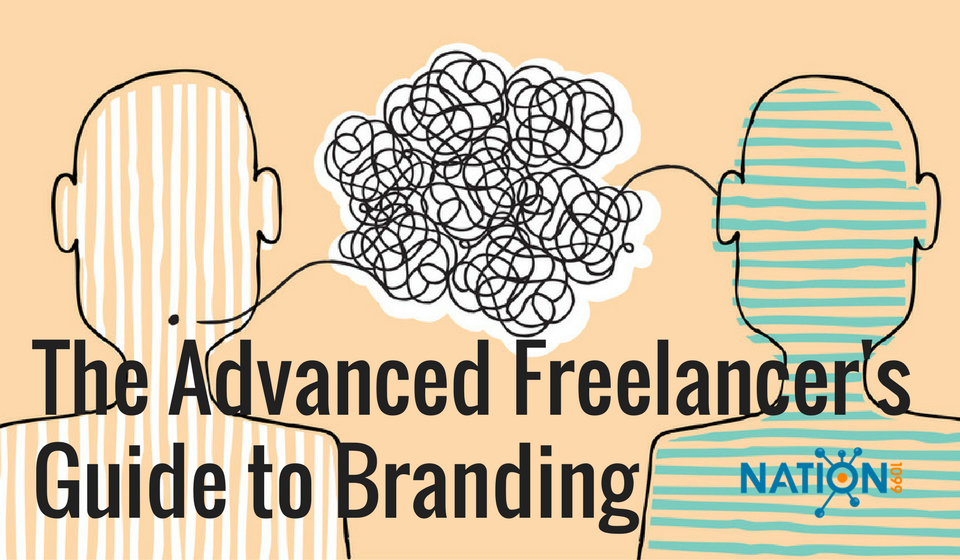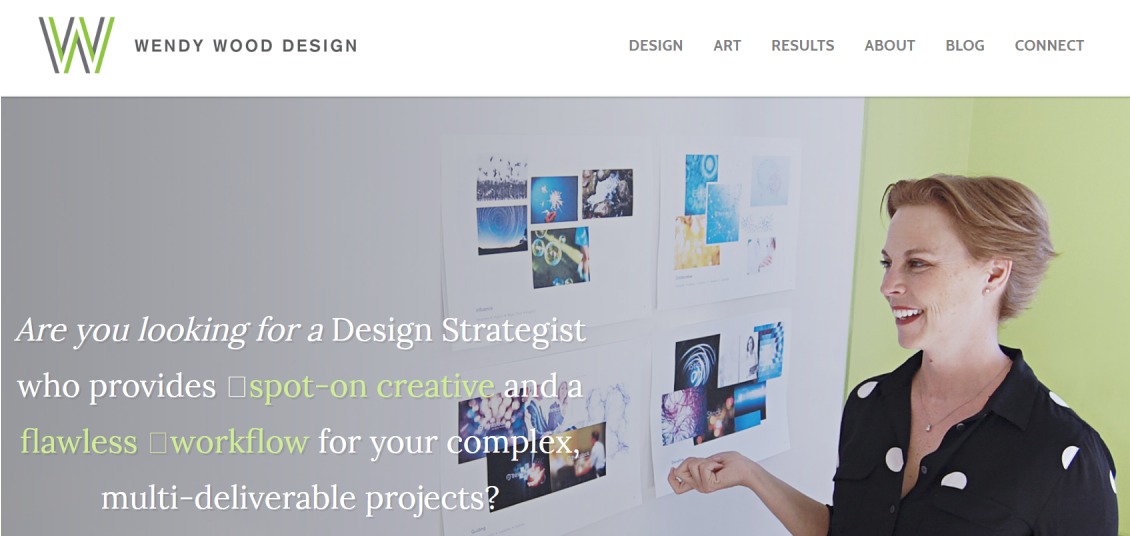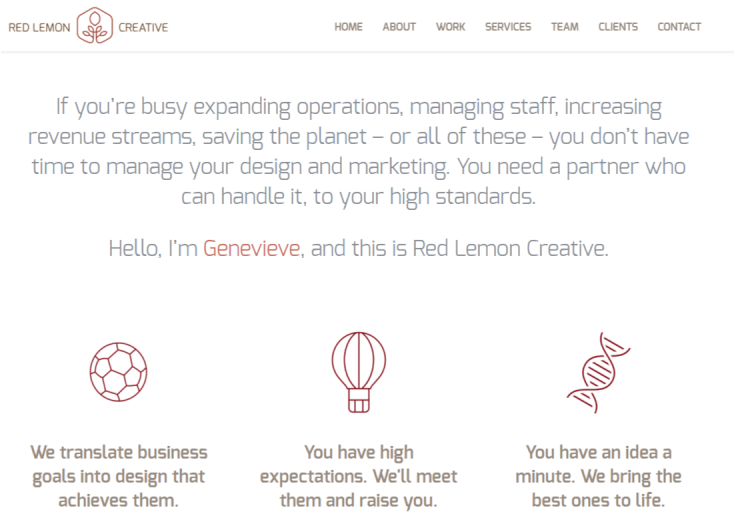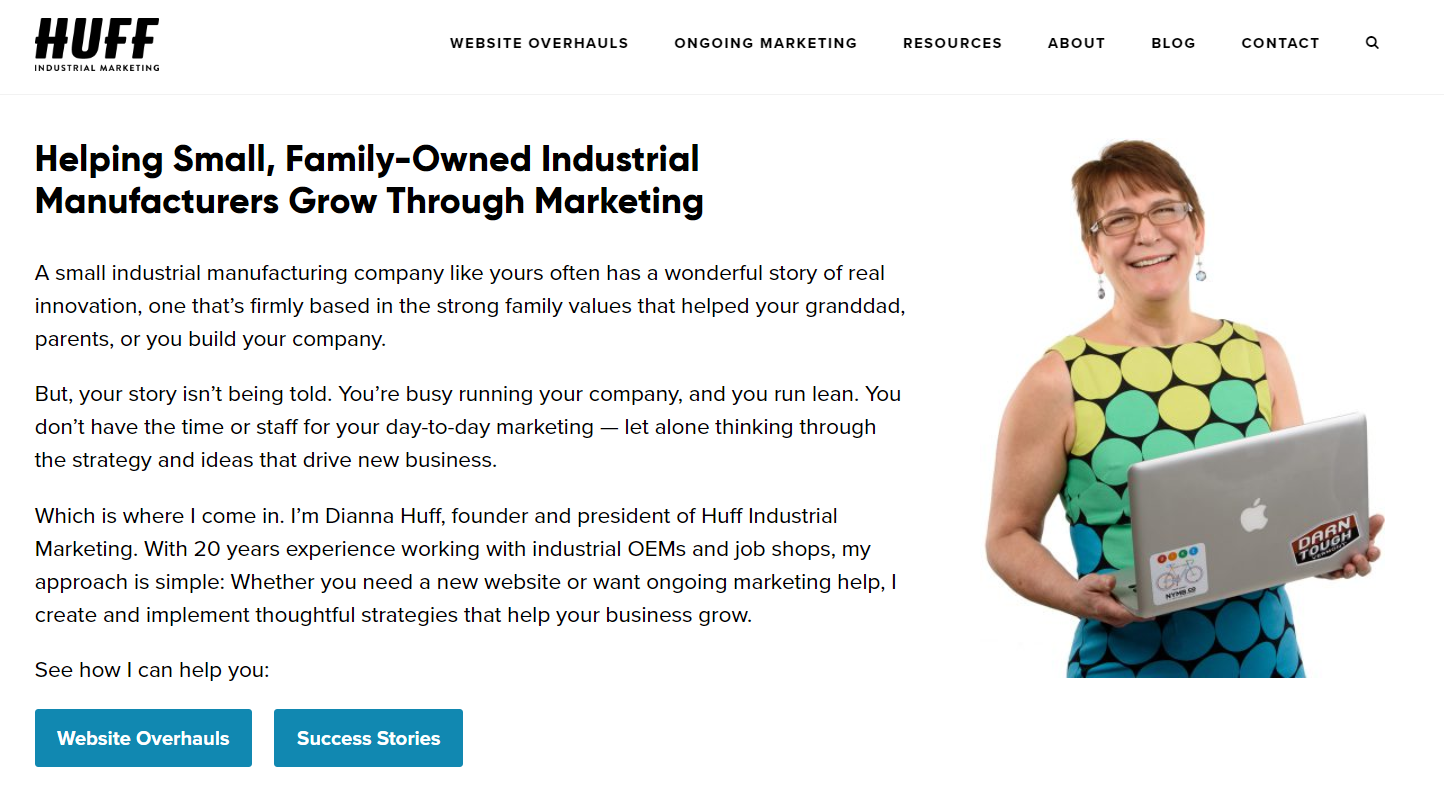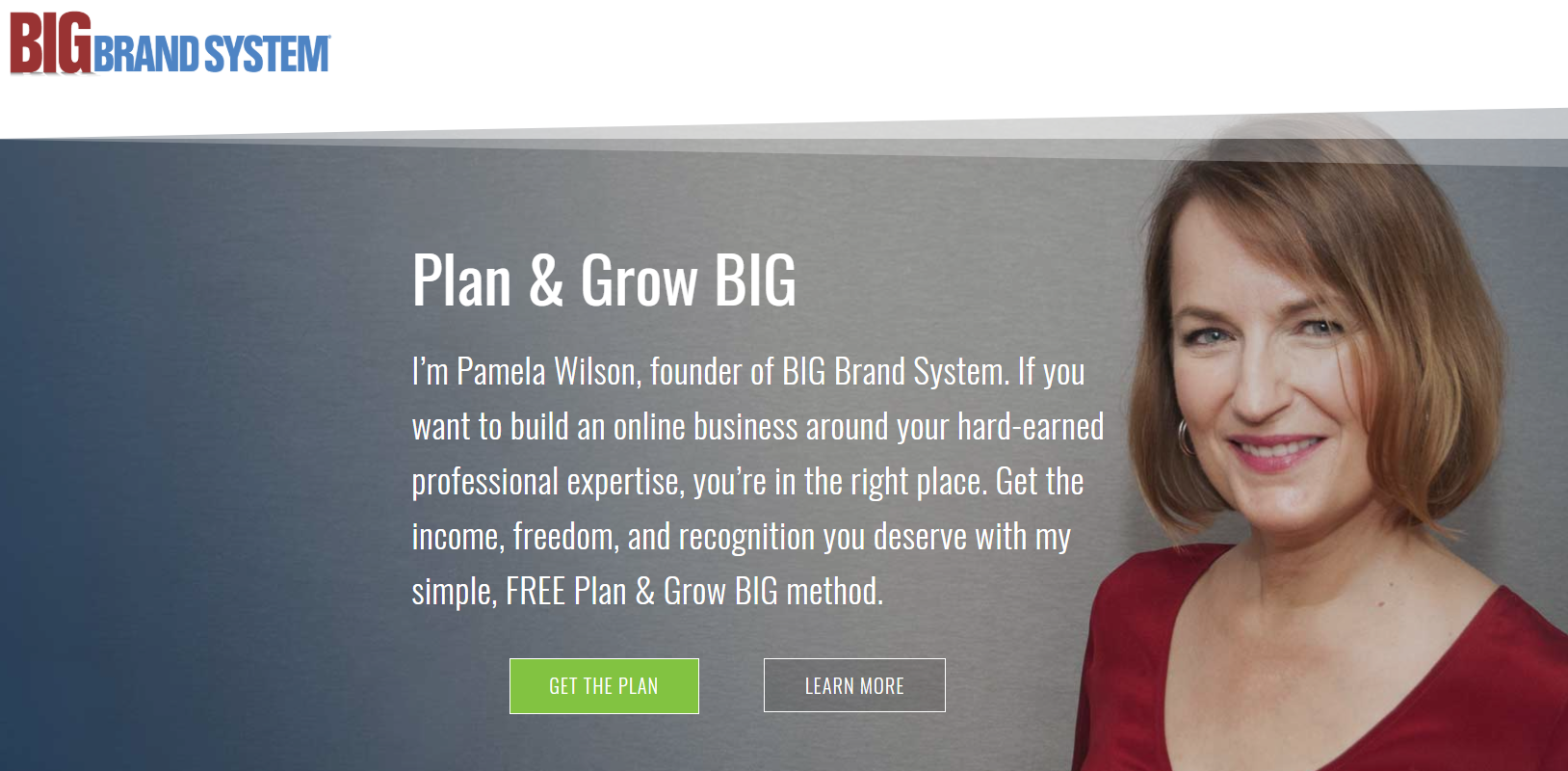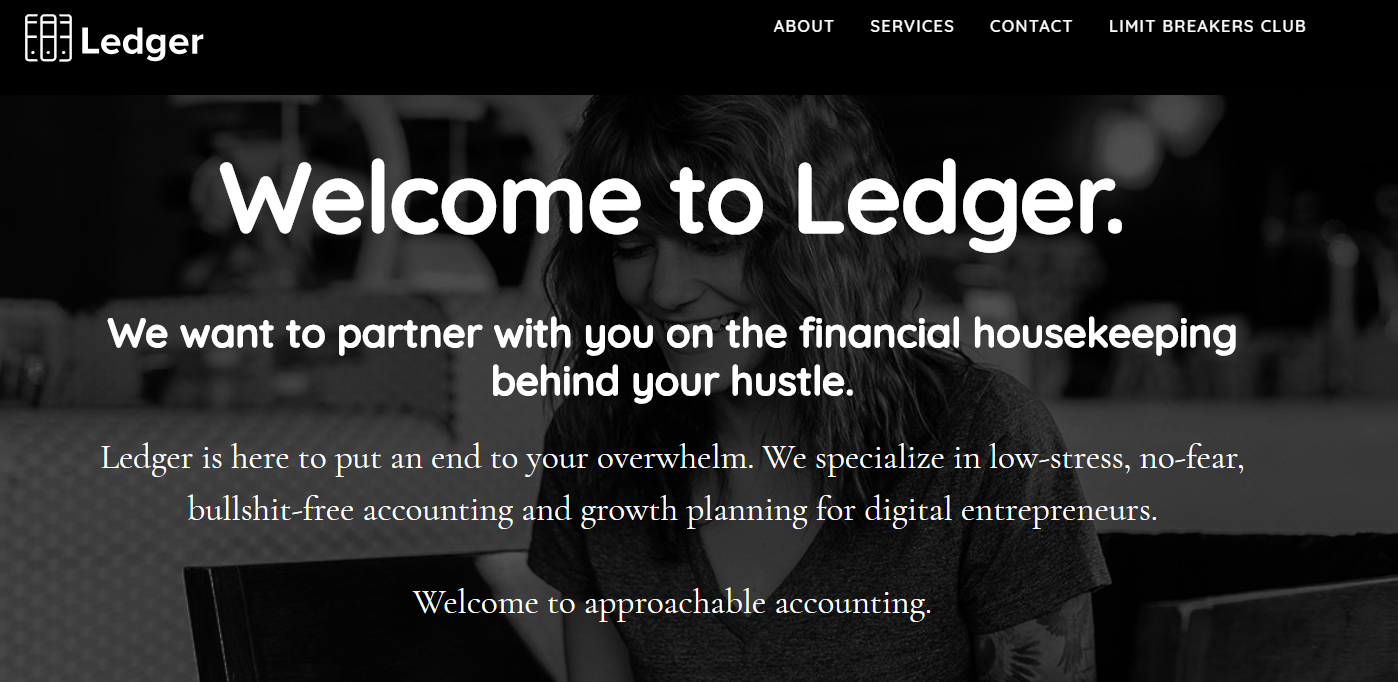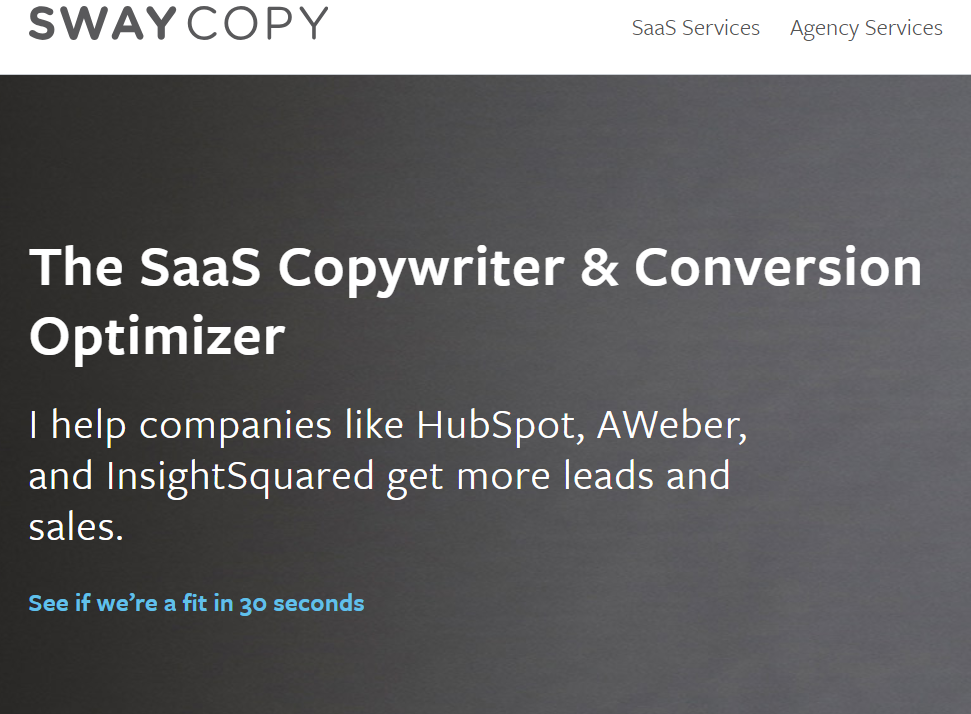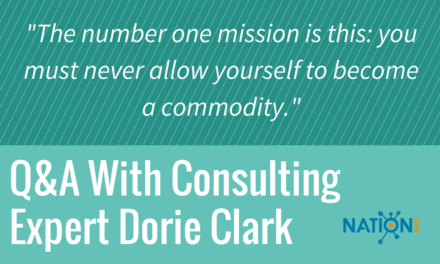A thriving solo career isn’t just the result of good business. Somewhere behind it all is a powerful freelance brand that clearly declares to the world “I’m the best choice to solve this particular problem for you.”
Brand is a term that causes some anxiety because it is thrown around by marketers as if it is obvious when it’s not. In fact, if you search on the term, you’re mainly going to find a lot of arguments. A great overview is this roundup article by marketing specialist Heidi Cohen with 30 different definitions of brand.
But for the purposes of growing a freelance or consulting business, let’s boil things down to a workable definition of brand:
Brand is what clients and prospective clients believe make your services unique and valuable.
What’s important about brand is that it emphasizes less what you say about yourself and more what people hear and understand. It’s the impression you are making.
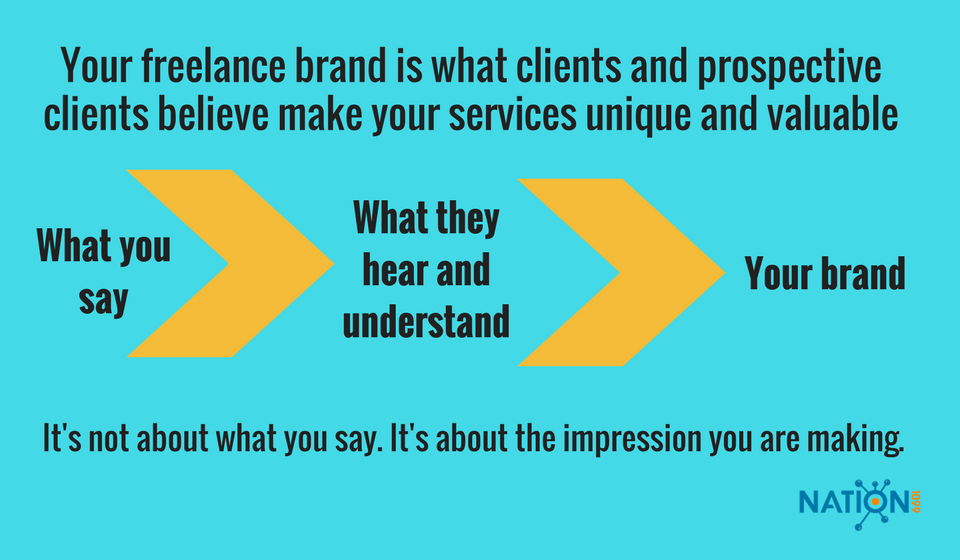
The thing about impressions is that you make them whether you plan on it or not. So a freelance business has a brand even if you haven’t give it much thought.
And that may not result in very effective branding.
For example, suppose the message you are sending is, “I’m an experienced professional providing high-quality photography services.”
What is probably being heard is, “Another freelance photographer.” Your prospective clients at this point believe that nothing makes your services unique and valuable.
This is not a basis for getting better clients and charging higher fees.
A lot of freelancers get frustrated here and go into a mode that I call “I’m explaining myself as hard as I can.”
Explaining yourself isn’t branding if it isn’t grounded in some of the work below.
Another definition of freelance brand is that it is the reason clients buy from you instead of someone else or instead of not buying at all.
If a client buys from you because you are cheapest, that’s your brand.
If they buy from you because you are fastest, that’s your brand.
If they buy from you because you were the last person they talked to and one is as good as another, that’s your brand.
None of those brands is a strong foundation for getting better clients either. If your are a freelance photographer, you may want clients to believe your photos will help them make more sales. Or, if you are a wedding photographer, you want clients to believe you will create something priceless for them.
Those beliefs about you are a better foundation for a satisfying freelance career.
So the concept of a freelance brand isn’t that difficult. At heart it’s just being more conscious of the impression you make so that prospective clients believe something more specific that has value.
In practice, it takes a little mental energy to figure that out, but you can change that starting today. These are first steps to getting started on taking control of your freelance brand.
1. Find your niche
This point should look familiar. We’ve been emphatic before about how critical it is commit to a well-defined niche, whether in reference to getting higher quality clients or bidding for jobs on Upwork.
And we keep talking to numerous coaches and successful freelancers, and all of them — every single one — emphasize the importance of having a niche.
Why don’t freelancers commit to developing a niche? Because they are afraid of “leaving money on the table.”
What if I send the message that I specialize in widgets and a visitor to my site is selling gadgets?
You have to get over that fear. In fact, you should embrace it. Think of leaving money on table as the positive signal you are looking for. When that happens, then you know you are finding the gate into the garden where you are valued more.
Until you get to the point that you are saying, “This client and aren’t right for each other,” then you don’t know who you are right for, and you won’t be able to charge a high fee for a valuable service.
One of the examples below even has a clever little section where prospects can “check if we are right for each other” and they specify which visitors to their website are probably looking in the wrong place.
Think of it this way: When you say “Anyone can benefit from my services” then you are treating your prospective clients like commodities. Any warm body with a purchase order is as good as another.
If you treat your clients like a commodity, then you can’t be surprised when you’re freelance work is treated like a commodity. You will stay trapped in a cycle of uninspiring clients and low fees.
Pretending you can be all things to all people is a recipe for competing for the lowest paying gigs. You make more money — and enjoy your freelance work more — when you decide you will be the right solution for a particular problem.
Committing to a niche is the first step toward branding your freelance services.
This takes time, but it’s helpful to start considering:
- Where is the greatest demand for my work?
- What kinds of clients do I most enjoy working with?
- Who will benefit from my work the most?
Committing to a niche is scary at first, but think of it as an investment in your future that starts to have compounding effects. The more you are in that niche, the more you come to know the needs of these clients better. You will be the go-to professional in that industry, which allows you to charge for advice and strategy as well as for the service.
A last word to reassure you about committing to a niche . . . This doesn’t mean you aren’t permitted to work outside that niche. If someone outside your niche does inquire about your services you don’t automatically turn them away.
Having a defined niche is about sending a message about who you can help best. If someone else wonders if you can help them too, you can still have a conversation about that.
I’m maintaining a slideshow of examples of freelancers and consultants whose branding is clear about who they serve. Let us know what you think in the comments.
credits: Wendy Wood Design / Red Lemon Creative / Saltworks / Huff Industrial Marketing / Pretty Fly Copy / Big Brand System / Ledger / Sway Copy
I’m going to postpone going over why I like each of these, but suffice it to say that each of them makes three things clear:
- The niche or who they help.
- How they help.
- Who they are or what their services are.
There is one case that may seem to be not like the others: Saltworks, itself a branding and design firm, has a very clear niche but not in the everyday sense of identifying an industry.
Instead the Saltworks site defines the kind of branding that companies may want to do (what it calls enthusiast brands), and says that its niche is that kind of company. They work with companies selling A through Z products, but what connects them all is that they aspire to be enthusiast brands.
Similarly, the website for Red Lemon, a strategy and design firm, makes clear that its niche is businesses with a particular kind of problem — operations management — rather than emphasizing the industries their clients are in.
Remember, there is more than one axis to define a niche by. It’s not just about the industry vertical.
2. Get more specific about what your clients need
Having a niche means saying “These kinds of companies benefit from my solutions.”
That’s usually defined by the industry. For example, a freelance photographer might develop an expertise in commercial architecture and get a lot of clients in the real estate industry.
But you have to know more than that. To have a clear freelance brand, you really have to understand what problems your clients are trying to solve.
Take the example of photography for architecture firms. When a client hires this freelancer, is it because they need presentations to help them get past zoning boards at the municipal level? If so, does the freelancer understand the difficulties faced in that situation and how their photography solves them?
Or maybe the problem the client is working on is attracting investors? Or maybe they are at the sales stage and are trying to solve the problem of how to attract buyers?
Or maybe the photography an architecture firm needs supports their own brand building so they can win design awards and be in a better position over the long term.
A lot of beginning freelancers take the attitude with their clients of “Just tell me what you need.” They are “deliverables oriented.”
But our clients want us to be “solutions oriented.” They want confidence that our work will align with their strategy.
You need to do a certain amount of research to really understand what your your prospective clients need. That’s a much longer subject for another post. But the first thing you can do is just ask your current clients. The next time you have them on the phone for a check in, just engage them in a conversation about what business problems they are struggling with.
Sometimes you do brand development research about a new client base that you want to start connecting to. You don’t have any current relationships. How do you research their needs so you can brand your freelance service clearly for that audience?
One favorite trick is to look at the testimonials they give to their current solutions (i.e. your competitors). Find the agency or freelancer who a lot of your targets are currently buying from and find their testimonials page. Ditto the case studies. When clients compliment the good work of that agency or freelancer, they often reveal a lot about the problems they were having. In fact, you can find that kind of insight all over the examples in the slideshow above.
Market research about what your freelance clients need depends on your particular discipline and your target niche, but in general it takes a lot of eavesdropping where they hang out. You’ll have to do some creative thinking about where your clients are opening up. Here are a few ideas:
- Crunchbase
- LinkedIn groups
- Industry forums
- The podcasts that target them
- The press releases they send out
You’re trying to tune in to the voice of your target client. At the end of this client research, you want to have an answer to these two basic questions:
a. What problem am I going to solve?
If the answer to that is “provide photographs,” then you aren’t there yet.
b. And for whom?
And you already know the wrong answer to that one, because we covered it above. You can’t say, “It could be anybody.”
3. Know what makes you unique
The next stage of developing your freelance brand involves a long look in the mirror.
The goal is to communicate who you are and what you do . . . which sounds simple, but it has to have that extra quality of being unique.
You can’t just say, “I’m an experienced freelance photographer.”
Too many freelancers who are stuck at this point rely on sounding quirky in order stand out. But quirky isn’t sufficient if it isn’t relevant to your client’s problems. It probably doesn’t matter if your pet parrot is your spirit animal.
Go back for a second to the discussion above about specifying your niche. Why is that your niche? Does it derive from a particular passion? Then that’s part of who you are and what you need to communicate in your freelance brand.
Consider questions like these:
- What do you do better than anyone else?
- What are your goals for your business?
- How is your process unique?
- When do you feel most motivated?
When you dig into those questions, you start to differentiate yourself from the other choices that your clients can consider.
A word about differentiation . . . the point isn’t to trash your competitors and to make yourself look better by comparison. The object is just to explain the difference.
So the real test of differentiation is to describe someone whose work you admire. First identify the competitor or colleague about whom you can say, “I love what they do. Their work is really unique.”
And then you follow that up with: “Here is how what we do is different.”
When you can do that, then you are a long ways toward spelling out your freelance brand.
4. Start building your freelance brand into your messaging
By now you should be able to write what brand experts call a position statement, which often follows this basic formula:
For {my specific clients and their problems}, {my company name} does {description of how my freelance services are unique and solve the problem}.
That should be the core of your message going forward. It signals who your ideal client is. It reminds you what you are not going to chase after. And it sets the table for a conversation about higher fees.
Your position statement demonstrates, “You are not a commodity to me, and the service I provide is not going to be a commodity for you.”
If you aren’t a designer or copywriter, you should start budgeting for help to make sure your freelance brand is incorporated into the visual and written elements you present. Until then we have a complete guide on building a website for your freelance or consulting business that you can review for more advice about how to handle this.
And there are lots of discounts on website and design services on our toolkit page.
A hardcore branding guide for your freelance business will be a lot more comprehensive than this. But these four steps will give a running start at improving how clients and prospective clients think about you.
Let us know how it’s going, and let us know in the comments below what questions you still have.

Robert McGuire
Publisher of Nation1099
Robert McGuire is the owner of McGuire Editorial, a content marketing services firm specializing in B2B and tech startups.

